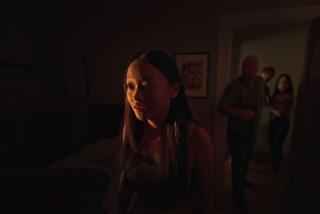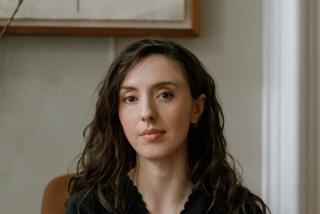Psychic twins collide in Curtis Sittenfeld’s ‘Sisterland’

- Share via
Clairvoyants, fortune tellers and psychics are all treated with a healthy dose of skepticism these days — after all, there’s little proof that humans can actually see into the future and predict either the end of the world or the score of the next Dodgers game. But what if some humans can?
That’s the premise of “Sisterland,” the latest novel from Curtis Sittenfeld, which explores the complications that come with knowing what is going to happen.
Identical twins Kate and Violet Shramm have had “senses,” as they call them, since childhood. The senses are something that Kate, the narrator of the story, has always pushed away to avoid being an outcast. Violet, on the other hand, the more audacious of the two, embraced her senses as a child and as an adult makes her living as a psychic. The twins are very different. Violet’s life is in constant disarray, she doesn’t drive, she’s overweight; Kate is happily married with two small children and a husband with a grounded career as a geologist.
That’s why Kate is both embarrassed and furious when Violet shocks the sisters’ small St. Louis community by predicting that a big earthquake will soon strike the region. This prediction, coming soon after another earthquake in the area, throws Violet and Kate into an ever-expanding media loop as locals and strangers fret about the coming disaster and Violet’s clairvoyance comes under public scrutiny.
Hanging a whole plot on Violet’s outlandish claim may seem a little off-putting at first — especially since Kate describes Violet as a troubled adult. But Kate makes clear that their senses are in fact very real. When she was younger, Kate predicted a classmate would be the first to die, and that classmate later fell off a cliff; when she was older, she saw her future husband’s face before they met.
Violet is even more successful at prognostication, earning attention in St. Louis by helping to track down a boy who had gone missing; both she and Kate worked together, using their senses, to identify the kidnapper and then inform police.
Sittenfeld is celebrated for her ability to make her female characters relatable — her first novel, “Prep,” was told from the perspective of an adolescent in boarding school, and her third book, “American Wife,” took on the story of a first lady loosely based on Laura Bush. Though “Sisterland” has a hint of the supernatural, its characters seem just as grounded as those in Sittenfeld’s previous books.
Sittenfeld builds suspense by making the sisters’ senses unreliable and unpredictable. Kate may not feel anything for months, and then she can suddenly hear what Matt Lauer is saying to her sister, off-camera, when no one else can. Violet can see the face of a kidnapper but doesn’t know much about him and gets his profession wrong.
Their flaws open the door for skeptics like Kate’s husband, Jeremy, who wonders if the sisters are really psychic. “We have these articles of faith about ourselves,” he tells her, “but sometimes they’re wrong.”
As the supposed day of the earthquake nears, tensions rise — between Kate and Violet, between Kate and her husband, and between skeptics and believers. Kate begins to question the abilities that she’s hated her whole life and begins doubting all her instincts. It brings to mind a person boarding an airplane who has a premonition that the plane is going to crash — the choice to actually get off the plane is a difficult one because premonitions like that are usually wrong, but then again, maybe they aren’t.
By the end of the book readers will wish that Kate and Violet were real people, both because they’re relatable women and because it’s fun to imagine that psychics exist who can know things with such an impressive degree of accuracy — that they’re out there in the American heartland, living in this world, but also in one that’s full of mystery and adventure.
Sisterland
A Novel
Curtis Sittenfeld
Random House: 416 pp., $27
More to Read
Sign up for our Book Club newsletter
Get the latest news, events and more from the Los Angeles Times Book Club, and help us get L.A. reading and talking.
You may occasionally receive promotional content from the Los Angeles Times.









